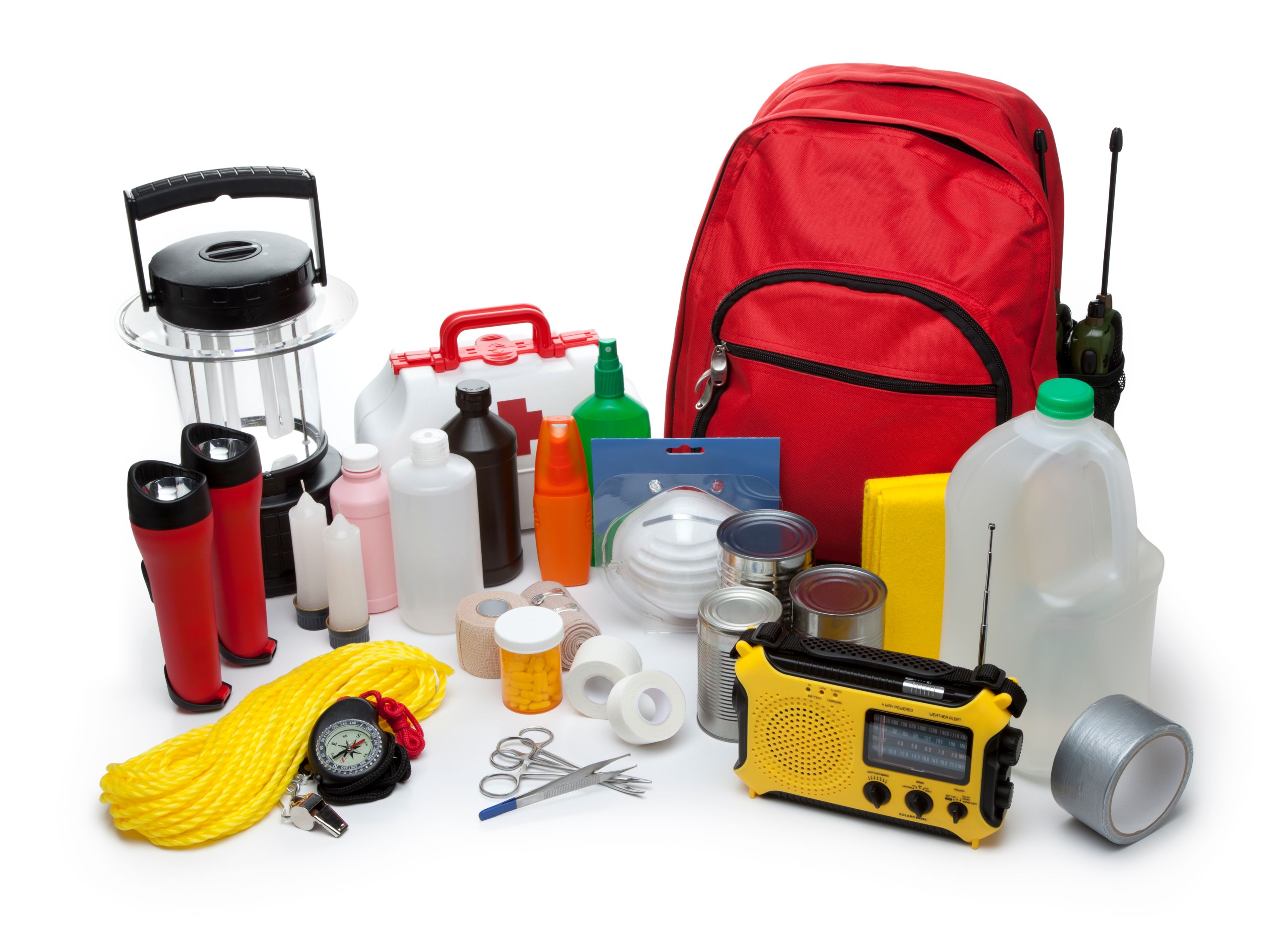Building a Disaster Supply Kit
Having a disaster kit in your home is one of the best ways to prepare yourself for a disaster or an emergency. You should have sufficient supplies for everyone in your household to survive for at least 72 hours. Don't forget your pets!

Everyone knows what a disaster supply kit is - but how many items can you name that need to go in one? The following items are recommended for a basic disaster supply kit:
- One gallon of water per person per day for three days – remember to include enough for your pets, too.
- At least a three-day supply of non-perishable food. Select foods that require no refrigeration, preparation or cooking and little or no water and choose foods your family will eat: ready-to-eat canned meats, peanut butter, protein or fruit bars, dry cereal or granola are some good examples. Also pack a manual can opener and eating utensils
- Battery-powered or hand crank radio and a NOAA Weather Radio with tone alert and extra batteries for both
- Flashlight and extra batteries
- First aid kit
- Whistle to signal for help
- Dust masks, to help filter contaminated air and plastic sheeting and duct tape to shelter-in-place
- Moist towelettes, garbage bags and plastic ties for personal sanitation
- Wrench or pliers to turn off utilities
- Local maps
- Cell phone with home and car chargers
Additional recommended items, and items that may be vital depending on your living situation:
- Prescription medications, list of medications, dosage and schedule
- Glasses
- Infant formula and diapers
- Hearing aid batteries
- Pet food, extra water for your pet, leash and collar
- Important family documents such as copies of insurance policies, identification and bank account records in a waterproof, portable container
- Cash or traveler's checks and change
- Emergency reference material such as a first aid book or information from www.ready.gov
- Sleeping bag or warm blanket for each person. Consider additional bedding if you live in a cold-weather climate.
- Complete change of clothing including a long sleeved shirt, long pants and sturdy shoes. Consider additional clothing if you live in a cold-weather climate.
- Household chlorine bleach and medicine dropper – When diluted nine parts water to one part bleach, bleach can be used as a disinfectant. Or in an emergency, you can use it to treat water by using 16 drops of regular household liquid bleach per gallon of water. Do not use scented, color safe or bleaches with added cleaners.
- Fire Extinguisher
- Matches in a waterproof container
- Feminine supplies and personal hygiene items
- Mess kits, paper cups, plates and plastic utensils, paper towels
- Paper and pencil
- Books, games, puzzles or other activities for children